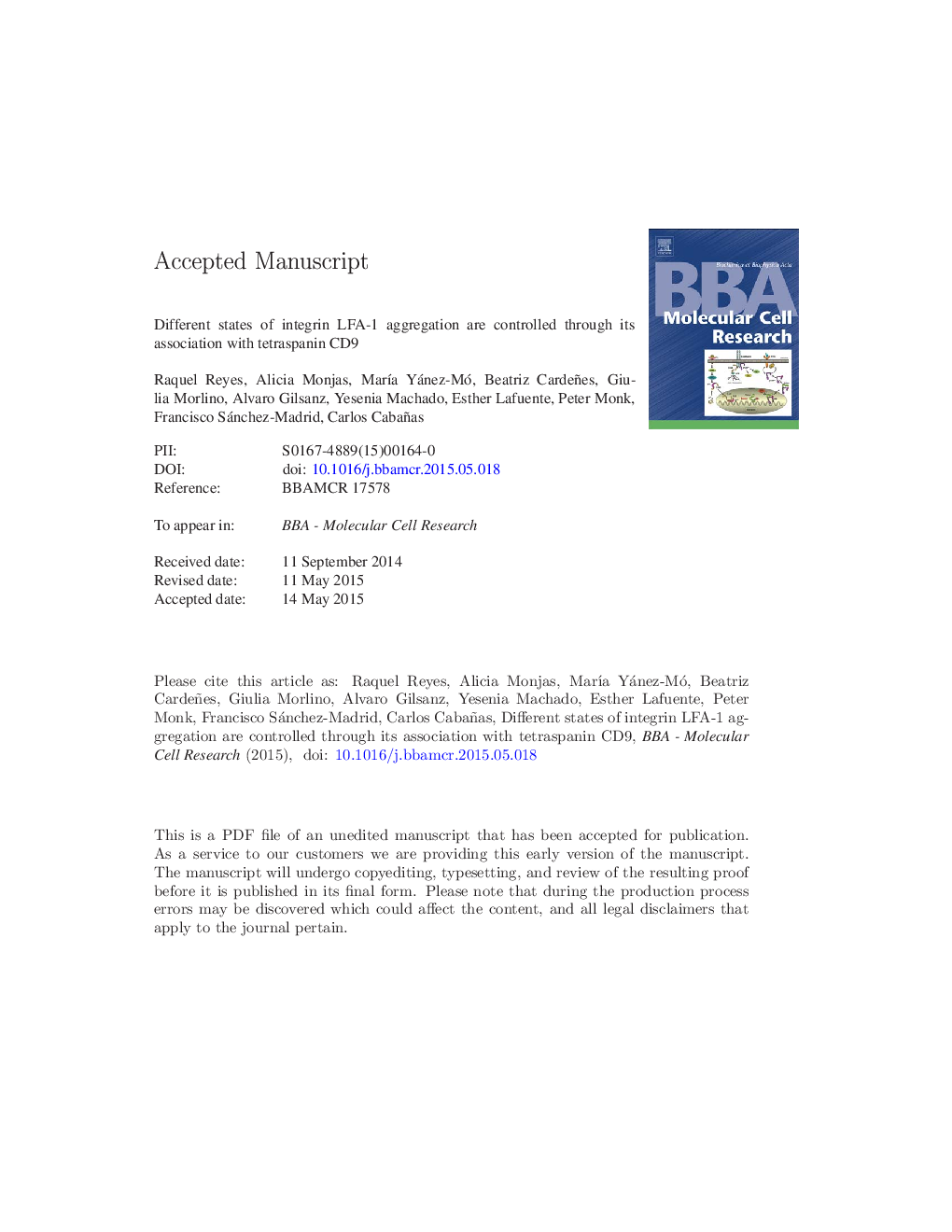| Article ID | Journal | Published Year | Pages | File Type |
|---|---|---|---|---|
| 10801946 | Biochimica et Biophysica Acta (BBA) - Molecular Cell Research | 2015 | 45 Pages |
Abstract
The tetraspanin CD9 has been shown to interact with different members of the β1 and β3 subfamilies of integrins, regulating through these interactions cell adhesion, migration and signaling. Based on confocal microscopy co-localization and on co-immunoprecipitation results, we report here that CD9 associates with the β2 integrin LFA-1 in different types of leukocytes including T, B and monocytic cells. This association is resistant to stringent solubilization conditions which, together with data from chemical crosslinking, in situ Proximity Ligation Assays and pull-down experiments, suggest a primary/direct type of interaction mediated by the Large Extracellular Loop of the tetraspanin. CD9 exerts inhibitory effects on the adhesive function of LFA-1 and on LFA-1-dependent leukocyte cytotoxic activity. The mechanism responsible for this negative regulation exerted by CD9 on LFA-1 adhesion does not involve changes in the affinity state of this integrin but seems to be related to alterations in its state of aggregation.
Related Topics
Life Sciences
Biochemistry, Genetics and Molecular Biology
Biochemistry
Authors
Raquel Reyes, Alicia Monjas, MarÃa Yánez-Mó, Beatriz Cardeñes, Giulia Morlino, Alvaro Gilsanz, Yesenia Machado-Pineda, Esther Lafuente, Peter Monk, Francisco Sánchez-Madrid, Carlos Cabañas,
